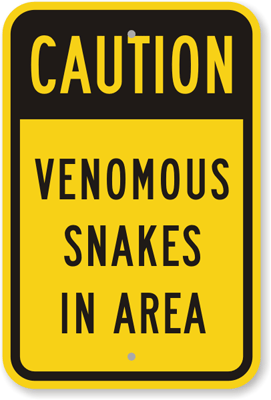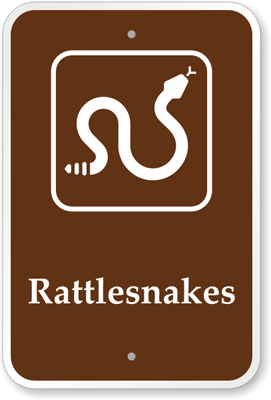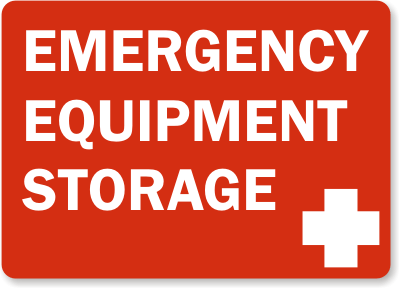Campground Injuries Increase Need for Signs
One of a series of signs that helps maintain safety on the campground, letting campers know which areas venomous predators inhabit. (MySafetySign.com)
6/6/2012 — Over the past few years, more and more Americans have been choosing to pack up the tent or RV and spend some quality time with the great outdoors. Maintaining safety on the campground accordingly becomes a higher priority, especially in light of recent campground injuries.
According to Medical News Today’s website, approximately 11,000 people are injured every year while camping throughout the United States. Last year, Yellowstone Park experienced its highest ever fatality rate, mainly caused by campers failing to follow beaten paths and failing to adhere to park regulations. Most injuries that occur on the campground are minor. Nevertheless, maintaining safety on the campground makes for a more fun and enjoyable experience for everyone involved.
While being adventuresome on the campground may seem thrilling, the consequences can be dangerous. Already this season, a 9-year-old Cub Scout from Lockport, Illinois was killed after falling into a ravine on a camping trip after tripping and falling on a rocky and hazardous path.
Rattlesnakes are one of the most common venomous reptiles in North America. Rattlesnake bites account for the majority of snake-related fatalities in the past ten years (via CampgroundSigns.com).
One particular issue that has been ever-rising on North American campgrounds is a lack of awareness regarding venomous snake habitation. The American Academy of Family Physician’s website reports that over 8,000 injuries from venomous snakebites occur each year throughout the United States, although fatalities from venomous wounds are more rare.
Snake bites are naturally most prevalent when outdoor activity is at its peak. It is particularly important for campers to be aware of snakes and similar, potentially fatal, hazards.
To maintain safety on the campground, know where the nearest first aid station or emergency equipment storage location is located.
When camping this summer, remember that not all campgrounds employ overtly direct approaches when it comes to safety regulation. A little research can go a long way – particularly when it comes to hazardous animal habitation.
Here are a few tips for a safer camping experience:
- Check out campgrounds beforehand, for venomous snakes or insects.
- Stay on clearly marked trails
- Avoid predominantly steep or rocky areas (particularly at night).
- Stay alert and focused when on the move.
- Locate your campground’s medical facilities or First Aid room as a rule, and keep a spare First Aid kit at all times just in case.
– S. Walsh

















